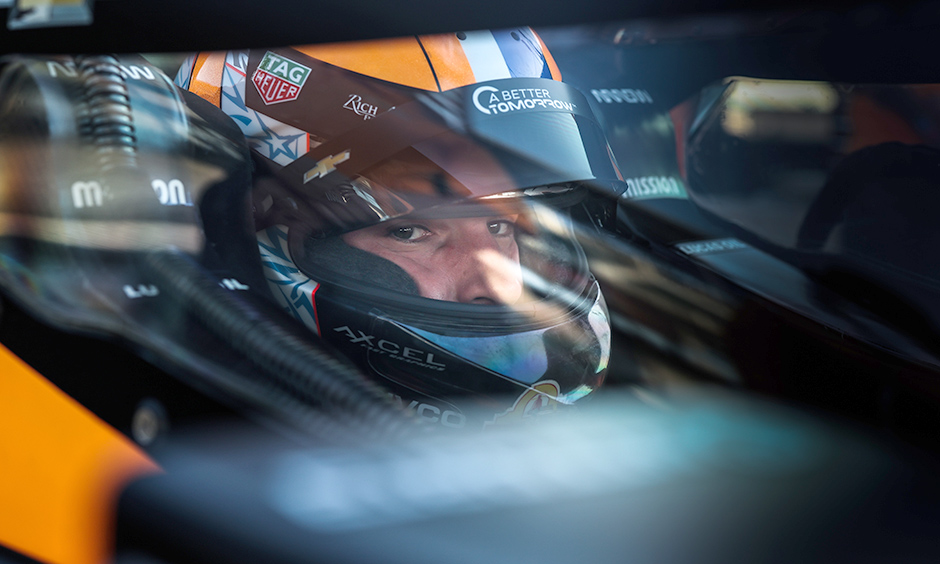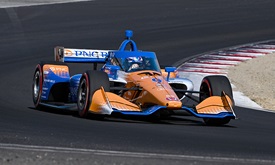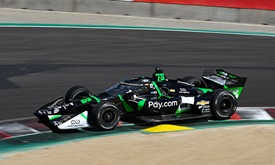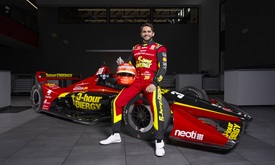Drivers Boosted by More Successful Hybrid Testing
FEB 23, 2024
More positive feedback from NTT INDYCAR SERIES drivers was heard after three days of testing this week of the new hybrid system planned for implementation later this season.
Andretti Global, Arrow McLaren, Chip Ganassi Racing and Team Penske put the new system through its paces Feb. 20-22 on the 2.21-mile road course at Homestead-Miami Speedway, where testing also took place last month. One driver per team tested each day.
On track Feb. 20 were Marcus Ericsson (Andretti), Pato O’Ward (Arrow McLaren), Marcus Armstrong (Ganassi) and Scott McLaughlin (Penske). Colton Herta (Andretti), Callum Ilott (Arrow McLaren), Alex Palou (Ganassi) and Josef Newgarden (Penske) took over Feb. 21. Testing ended Feb. 22 with Kyle Kirkwood (Andretti), Alexander Rossi (Arrow McLaren), Scott Dixon (Ganassi) and Will Power (Penske) behind the wheel.
“It was very fun to be back in the Honda hybrid,” Palou said. “We had quite a bit of running, progressing through all of the systems, and making sure everything is perfect. We got a lot of mileage, which was the target. The weather was great, and it was nice to be back in the car, so can’t wait to get the season started and to see the hybrid on the track.”
The 12 drivers combined to turn 1,202 trouble-free laps. That’s 2,656 miles, nearly the same distance by road from New York to Los Angeles. Power was the busiest driver, with 150 laps under his belts Feb. 23. Kirkwood, Ilott, Herta and Palou each exceeded 100 laps, too.
INDYCAR’s hybrid power unit, a collaboration between Chevrolet and Honda, will enhance the racing action with additional horsepower and further the series’ efforts to deliver the most competitive motorsport on the planet. The new 2.2-liter twin-turbocharged V-6 engine with hybrid technology will feature additional overtake (“push-to-pass”) options, ultimately giving INDYCAR SERIES drivers more choices and control – enhancing the on-track competition and excitement.
“The car and hybrid system have made huge gains over the last few months as far as reliability and performance,” Herta said. “It adds an interesting element for the drivers. There’s still a lot to learn from it, but from the testing we’ve done, it seems like it will make racing a bit more interesting. It gives us drivers more crucial decisions to make inside the car.”
The hybrid system is made up of the Motor Generator Unit (MGU) and Energy Storage System (ESS), both of which fit inside the bellhousing located between the combustion engine and the gearbox. Multiple strategies for regeneration and deployment have been tested as the power unit builds and transmits energy through the MGU before being saved in the ultracapacitor ESS.
The additional horsepower is deployed through the same motor generator. Unlike the traditional INDYCAR “push-to-pass” system the hybrid power until will not have a restriction on total time used over the course of a race.
INDYCAR officials have not committed to a debut date of the system or announced rules pertaining to it. And while testing continues to hone the performance and reliability of the hybrid, drivers already are keen for the next step – learning the rules on how the system can be used during competition. The strategic options will be fascinating, both from the cockpit and the pit box.
“Lot of laps turned on the hybrid again during this test with minimal challenges,” Rossi said. “We still don’t know what the rules will be surrounding its use, so knowing how it will impact race strategy is a question we are all asking. I look forward to its introduction onto the car at some point this year.”
Testing of the INDYCAR-specific hybrid unit is tentatively scheduled to continue March 28-29 on the Indianapolis Motor Speedway road course. The four race teams that tested this week are expected to hand off duties to AJ Foyt Racing, Ed Carpenter Racing, Juncos Hollinger Racing, Dale Coyne Racing, Meyer Shank Racing and Rahal Letterman Lanigan Racing.






















